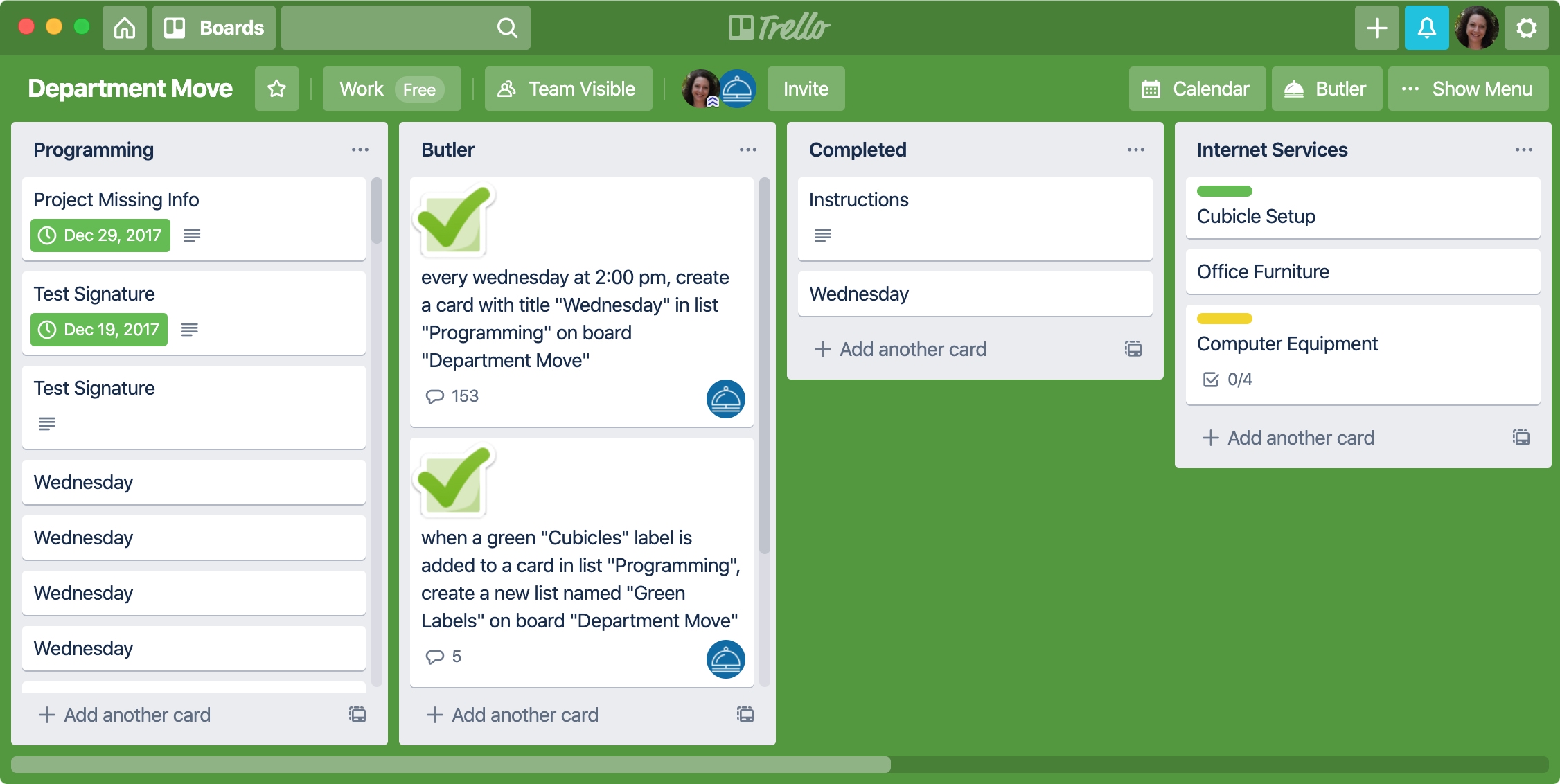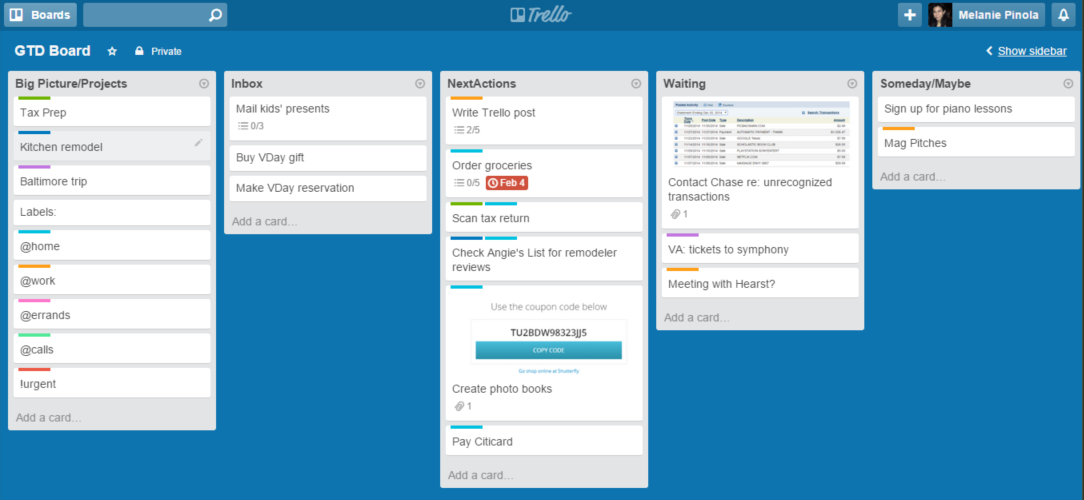
- #SAMPLE TRELLO BOARDS FOR PROJECT MANAGEMENT HOW TO#
- #SAMPLE TRELLO BOARDS FOR PROJECT MANAGEMENT UPDATE#
If you need to track task hours remaining, you may want to consider splitting stories down into task cards instead, as tracking hours remaining in the checklist is less than ideal.

Expended effort is tracked in the title in brackets (i.e. Points: When using the Scrum for Trello plugin, the story points are placed in the title in parentheses (i.e.The card can then be used to track details of the story, estimates, and who is working on the story. User Stories are captured in Trello as a Card.
#SAMPLE TRELLO BOARDS FOR PROJECT MANAGEMENT UPDATE#
UPDATE : Now featured on ! You can access the board and see it live! The User Story Personally, I find too many lists overly confusing so I would recommend trying to keep your stages to a minimum and allowing the team to communicate with each other directly to ensure a story gets done. If you are working with a split dev/test team, you may also need columns for Deployed, Ready for QA, or In QA to allow your team to track where in the development cycle the story is. You may need multiple Done columns if you want to track which Sprints your work was completed in. Done: Work completed that has passed all acceptance testing can be moved to Done.These values roll up into the list header to allow the scrum master a quick view at progress in the current iteration, as well as on the individual stories. In my example here, I have been tracking total story points and also estimated story points completed. Developers can also provide an estimate in brackets of the amount of effort already spent. In Progress: Stories actively being worked on should be in this list, and the developers working on the story should assign themselves to the card.

These are the stories that the team can pull from and assign themselves to. You may also name this To Do or Sprint Backlog. Current Sprint: The Current Sprint is the work that needs to be done right now.Once estimates are applied, the total points wrap up into the list header to show you the size of the sprint. More refined estimates can be applied and stories can be broken down. Sprint Planning: This is the column where the team can begin planning for the next sprint without interfering with current sprint activities.This is where the Product Owner can work to build up work for upcoming sprints.

You’ll see on the board example that some stories have estimates, and some are still being written and aren’t ready for estimation yet. Product Backlog: This is where all the stories start.

I’ve split up the board in the following manner: The screenshot provided here is from a personal project (Project Loki) where I am running a one-man scrum team. Sample Trello Board configured for Scrum. If we want to bring backlog planning into the same view, we can do this with a few extra columns. In a Scrum process, we typically have the standard stages TO DO, IN PROGRESS, and DONE for our tasks. The first step in configuring Trello is to set up your Lists on the board.
#SAMPLE TRELLO BOARDS FOR PROJECT MANAGEMENT HOW TO#
In this post, I’d like to walk you through the process of how to configure a Trello board to run a Scrum-like process. Recently I started up a little side project for a personal application I wanted to write, and I decided to run the project using Trello and Scrum for Trello as my task tracking tools. In the past, I’ve written about how to use Trello for agile task tracking, and also about some tools that allow you to use Trello for Scrum.


 0 kommentar(er)
0 kommentar(er)
